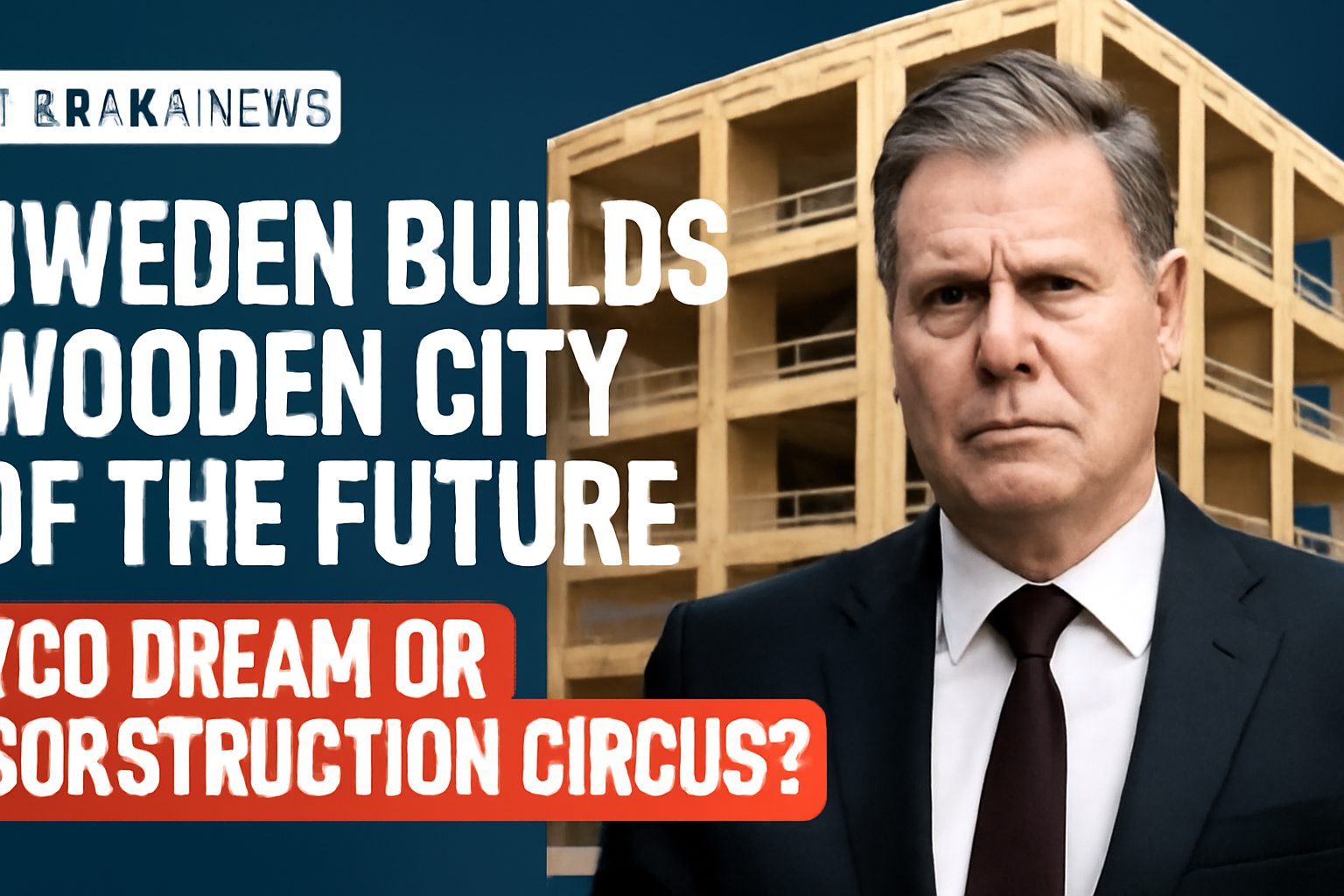Sweden Builds Wooden City of the Future: Eco Dream or Construction Circus?
Imagine a city where no concrete or steel is used, only wood! Yes, you read that right. Sweden is building the world’s largest wooden city in the suburbs of Stockholm, in the Sikla district. This project, worth 12 billion Swedish kronor (about 1.25 billion dollars), promises a revolution in construction and the fight against climate change.
Wood as the Main Building Material
Sikla is no ordinary neighborhood. It is a former industrial zone known for diesel engine production, now transforming into a modern residential area with wooden apartment buildings, offices, schools, and shops. All buildings will be constructed using cross-laminated timber (CLT), used for floors, walls, and load-bearing elements. The area of this wooden city will span several hundred thousand square meters.
Eco Boom or Just Marketing?
The construction sector produces a staggering 37% of global greenhouse gas emissions, making it the largest polluter. According to a US study, wooden buildings produce 81% less emissions compared to concrete and 76% less than steel structures. So, switching to wood is not just a trend but a necessity to save the planet.
Sweden and Wood: Love at First Sight
It’s no coincidence Sweden leads this revolution. About 70% of its territory is covered by forests, and wood has been used in construction for decades. Architect Oskar Norelius, working on the project, emphasizes that Swedes have a deep cultural connection with forests – a space of peace, energy, and ideas.
Faster, Warmer, More Profitable
Although concrete floor slabs are on average 20% cheaper than wood, building with wood is significantly faster. This means apartments and commercial spaces will be ready for occupancy and leasing much sooner. Atrium Ljungberg’s business development head, Hokan Hilengren, believes that aesthetic value and sustainability will increase market attractiveness, potentially bringing higher profits and rents.
Emotional Connection with Wood
Wood is not just a material but a source of warmth and openness. Visitors to the existing wooden Sara Kulturhuset building in northern Sweden have been seen hugging wooden pillars! Architects expect similar reactions in Sikla, where visible wooden structures, including ventilation pipes, will give the space a special charm.
Plans and the Future
The first block of 80 apartments, called District 7, will be completed by the end of 2025. By 2030, around 2,000 additional apartments are planned. Buildings will be flexibly designed so apartments can be converted into offices if needed, giving them a second life.
The Start of a New Era?
Despite challenges in Sweden’s real estate market caused by rising interest rates, investors remain optimistic. With excellent transport connections and a vision for a sustainable future, the wooden city in Stockholm could become a symbol of a new era in European architecture.
Conclusion
Is this just another eco-project or a real revolution in construction? Wood as a building material has huge advantages but also challenges. Speed of construction, emission reduction, and emotional warmth of spaces are undeniable pluses. However, cost and long-term sustainability remain questions to be answered.
If you thought wood was just for treehouses, think again! Sikla is here to show us what the city of the future could look like. So, would you live in a wooden skyscraper? Or is concrete still your thing? Drop a comment, maybe together we’ll figure out what’s better – wood or concrete!









